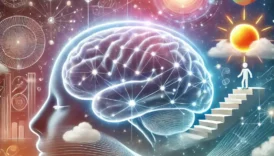Dreams and the Anunnaki
The Anunnaki and the Establishment of Earthly Kingdoms
The Anunnaki, often explored through both mythological and spiritual perspectives, have captured the human imagination throughout history. These beings are said to have governed specific regions of the Earth by establishing a unique communication system with humanity. Initially, their messages were conveyed through kings, but over time, the concept of “prophethood” emerged. Particularly significant is their use of dreams as a medium of communication, leaving a profound impact on human history.
- Dreams and the Anunnaki
- The Anunnaki and the Establishment of Earthly Kingdoms
- Dreams and the Theory of Parallel Universes
- Dreams Through the Lens of Freud and Science
- The Anunnaki’s Use of Dreams for Communication
- Historical Examples of Dreams and Visions
- Dreams and Their Manifestations in the Physical World
- Surah Yusuf: The Divine Significance of Dreams
- The Interpretation of Dreams and Their Realization
- Conclusion: The Cosmic and Spiritual Dimensions of Dreams
This mode of communication not only established a power dynamic but also laid the groundwork for a governance model closely aligned with cosmic order. Dreams played a pivotal role in this system, not merely as individual experiences but as instruments for societal transformation.
Dreams involving the Anunnaki frequently appear in mythological narratives. These dreams often guide the decisions of rulers or shape critical strategies concerning the future of societies.
Dreams and the Theory of Parallel Universes
The impact of dreams on humans can be examined from various perspectives, with the theory of parallel universes offering a particularly intriguing lens. For instance, dreams often present objects or events that manifest in reality after waking. Could this be a window into parallel universes? This concept finds resonance in religious texts like the Quran’s Surah Yusuf, where dreams are symbolic narratives that hold profound meanings. Prophet Yusuf’s dreams, which foretold events and provided guidance, underscore the importance of dreams as a cosmic medium.
Another aspect supporting the theory of parallel universes is how dreams sometimes seem to portray entirely unfamiliar realities. The symbols and meanings we encounter in dreams often transcend our conscious knowledge, suggesting that dreams might connect us to a collective or universal consciousness. Both scientific and spiritual explorations of this phenomenon can deepen our understanding of the universe’s mysteries.
When viewed through this lens, dreams become more than personal experiences; they emerge as carriers of cosmic messages.
Dreams Through the Lens of Freud and Science
Sigmund Freud, the pioneer of psychoanalysis, described dreams as reflections of the subconscious, revealing suppressed desires and fears. Modern science, however, continues to debate whether dreams represent an alternate reality or are simply mental activities. The Quran’s comparison of sleep and death suggests that dreams may serve as gateways to another realm. The symbolic messages conveyed during sleep further reinforce this idea.
From a scientific standpoint, studying the neurological basis of dreams has become increasingly important. The brain’s visual and emotional outputs during dreams could offer new dimensions to the theory of parallel universes. Moreover, these studies contribute to ongoing debates about whether dreams carry predictive messages about the future.
Analyzing dreams not merely as individual cognitive activities but as parts of a broader universal system may lead to groundbreaking discussions in this field.
The Anunnaki’s Use of Dreams for Communication
There are numerous accounts in Sumerian mythology about how the Anunnaki used dreams to communicate with humans. One of the most notable examples involves King Gudea. In his dream, the Anunnaki deity Ninurta instructed him to build a temple and provided detailed guidance on its construction. However, Gudea struggled to fully comprehend these instructions and sought further assistance through another dream.
In a subsequent vision, Ninurta revealed the completed structure of the temple, almost like a detailed architectural plan. This event highlights the blurred boundaries between dreams and reality. Remarkably, archaeological discoveries have validated the details of these dreams, proving that the temple’s construction closely followed the dream’s descriptions. This underscores the idea that dreams may be more than mental constructs—they can influence and shape the physical world.
The Anunnaki’s use of dreams as a communication tool is not unique to Sumerian culture. Similar narratives can be found in other ancient civilizations, such as Egypt and Babylon, where dreams were believed to carry divine messages and played a significant role in shaping critical decisions.
Historical Examples of Dreams and Visions
From Nebuchadnezzar to King David, dreams and visions have shaped the lives of numerous historical figures. One prominent example is Nebuchadnezzar’s vision of the mysterious inscription “Mene Mene Tekel Upharsin,” which was interpreted by Daniel. This vision not only had personal significance but also carried profound political implications.
Similarly, King David and his son Solomon received divine messages through dreams that influenced their monumental temple-building projects. Solomon’s wisdom and governance abilities are often attributed to the insights he gained through these visionary experiences.
Dreams and Their Manifestations in the Physical World
The Anunnaki’s use of dreams to communicate with humans raises another fascinating question: who communicates with the Anunnaki through dreams? This suggests that dreams may not merely be subconscious reflections but instead a part of a larger cosmic framework.
The interplay between dreams and reality hints at the workings of a greater universal order. Symbols seen in dreams may represent fragments of a cosmic plan, emphasizing that dreams carry not just personal but universal significance.
Surah Yusuf: The Divine Significance of Dreams
In the Quran, Surah Yusuf stands out as a profound exploration of the role of dreams in divine communication. Prophet Yusuf’s dream of 11 stars, the sun, and the moon bowing to him is a striking example of how dreams convey multilayered messages. This dream is not only a prophecy of future events but also an expression of cosmic hierarchy.
The story of Yusuf emphasizes that dreams are more than individual experiences; they are part of a larger narrative that guides human actions and shapes societal structures. Yusuf’s ability to interpret dreams further highlights the transformative power of these experiences.
The Interpretation of Dreams and Their Realization
Dream interpretation often serves as a precursor to their realization. In the story of Yusuf, his interpretation of two prisoners’ dreams accurately predicted their futures, demonstrating how dreams can influence individual destinies and even alter societal dynamics.
A particularly striking example is Pharaoh’s dream of seven fat cows and seven lean cows, symbolizing seven years of abundance followed by seven years of famine. Yusuf’s interpretation of this dream not only saved Egypt from disaster but also elevated his status as a trusted advisor to the Pharaoh. This demonstrates the profound impact dreams can have on shaping historical and social outcomes.
Conclusion: The Cosmic and Spiritual Dimensions of Dreams
Throughout mythology and religious texts, the Anunnaki’s use of dreams to deliver messages illustrates that dreams are not merely personal phenomena but integral components of a cosmic system. By delving deeper into the significance of dreams, we can uncover insights into humanity’s purpose and the mysteries of existence.
Dreams illuminate not only the inner workings of the human psyche but also reflect the broader narrative of cosmic order. The idea that dreams carry universal messages continues to gain support from both scientific and spiritual perspectives. As humanity strives to decipher the secrets of dreams, we inch closer to understanding how these experiences shape both individual and collective consciousness.
Stay tuned for more in-depth analyses in upcoming discussions. Take care!





